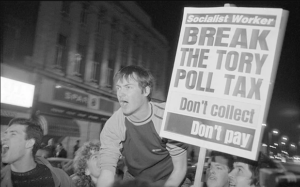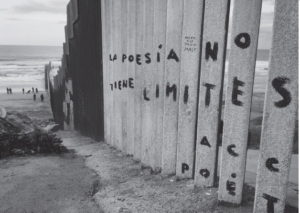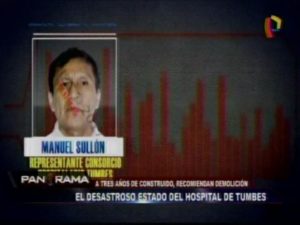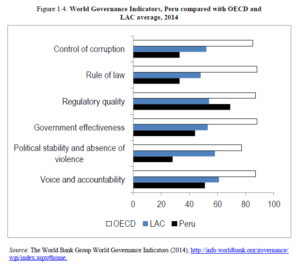Reunidos a mediados de junio en Bakú, los dirigentes de los países de la zona del Mar Caspio se propusieron acrecentar el transporte de hidrocarburos desde el Caspio a Europa evitando a Rusia. También acordaron un frente común contra el separatismo en sus países. El aporte del presidente georgiano Mikhail Saakachvili es una contribución decisiva a esta cooperación dirigida contra Moscú.
Durante una visita de rutina al puesto aduanero de Opiza, cerca de Tbilisi, el presidente de Georgia, Mikhail Saakachvili, se vio confrontado a ciudadanos disconformes con el funcionamiento de esa administración. Decidió entonces destituir inmediatamente al jefe de la misma, y dio a su Primer Ministro, Zurab Noghaideli, las siguientes directivas: “Despida a todo el personal de ese servicio. Tome gente nueva, con un sueldo de 1.000 gel (443 euros) e instrucciones precisas. No quiero ver más personas con problemas aquí (…). Si verdaderamente construimos una economía libre, (…) si queremos (que) se desarrolle rápidamente y de manera dinámica, debemos lograr que esas estructuras se preocupen más por los ciudadanos” 1. El mismo día, el Presidente ordenó el cierre de otro organismo, la Comisión Nacional de Regulación del Transporte, a la que calificó de “parásito”. Esos acontecimientos resumen por sí solos lo que ocurre en Georgia: una rápida transformación social de arriba hacia abajo.
De todas las “revoluciones de colores” no violentas 2, la de Georgia aparece como una excepción: mientras que las de Serbia, Ucrania, el Líbano o Kirguizistán provocaron una parálisis política -con un Presidente y un Primer Ministro que representaban el viejo régimen uno, y el otro el campo reformista- los dirigentes georgianos de la “post-revolución” de 2003 3consideran poseer un mandato del pueblo para cambiar las cosas. Surgidos de la revolución, el presidente Mikhail Saakachvili y su entorno disponen a la vez del poder y de la voluntad de reformar la sociedad georgiana.
Para entender los objetivos de esta evolución es preciso recordar las causas que la provocaron, y por lo tanto, el estado en que se hallaba el país al final del régimen precedente. Bajo el mandato del ex presidente Eduard Chevardnadze, Georgia deseaba acercarse a las naciones occidentales -fue por entonces que Tbilisi manifestó su intención de integrar la Organización del Tratado del Atlántico Norte (OTAN)- y gozaba de una gran cantidad de libertades políticas y de pluralismo. Sin embargo, la democracia de Chevardnadze se basaba en un Estado débil, lo que no inspiraba respeto a Occidente ni permitía realizar reformas económicas. La dirección estaba en manos de clanes criminales y corruptos. Los actuales “revolucionarios” provienen del ala más reformista y más occidentalizada del partido de Chevardnadze. A fines del año 2001 habían decidido separarse del llamado “zorro blanco”, para construir un Estado fuerte, capaz de modernizar al país.
Esa transformación perseguía un objetivo: la “occidentalización”. Georgia no sólo desea parecerse a los países occidentales, sino también desempeñar un papel central en ese grupo de naciones: “Para los occidentales somos un interlocutor potencial y no un pequeño país que pide su protección”, declaró el presidente Saakachvili 4. El deseo de los georgianos de integrar Occidente es político, pero también ideológico y afectivo. Pertenecer a Occidente significa sumarse a un mundo considerado moderno, y dejar atrás un pasado soviético vivido como arcaico. Es una reacción del imaginario ante todos los flagelos que padece esa nación, el primero de los cuales sería Rusia, a la que se sigue percibiendo como soviética.
Verdaderos cambios
Durante largo tiempo Moscú había representado la vía de la modernidad; para el nacionalismo georgiano del siglo XIX, para los mencheviques socialdemócratas de comienzos del siglo XX, para los comunistas georgianos bajo el poder de sus compatriotas Stalin y Beria. Esa imagen desapareció en 1989 cuando el ejército soviético abrió fuego contra manifestantes desarmados en Tbilisi, matando a diecinueve personas. A partir de entonces, Rusia se convirtió en el símbolo de todos los fracasos sufridos por el país. Por otra parte, el sentimiento anti-ruso permitió amalgamar a una elite profundamente dividida. Muchos desarrollos políticos tienen que ver con esas consideraciones emotivas, cuando no ideológicas.
En pocos años la joven “revolución de las rosas” impuso verdaderos cambios: el Estado afirmó su poder tanto en el interior del país como en el plano internacional. Logra recaudar impuestos, pagar regularmente los salarios de los funcionarios públicos y poner en ejecución proyectos de infraestructura. Además, lleva adelante un enérgico combate contra la corrupción, uno de los más duros fracasos del pasado régimen. Sectores enteros fueron desmantelados y reformados: se disolvieron el ejército y la policía -antaño los símbolos más visibles de la corrupción y de la incuria del Estado- y se reclutaron nuevos oficiales.
Pero lo que más se transformó fue la educación. “El objetivo de nuestras reformas es elevar el nivel de nuestro sistema. Durante quince años no existió ninguna reforma y los logros del período soviético no resistieron”, declaró Gigi Tevzadze, rector de la universidad Ilia Chavchavadze y uno de los arquitectos de las medidas adoptadas. Y añadió: “El deterioro de la enseñanza fomentó la corrupción en ese sector”. Así, según Gigi Tevzadze, hace algunos años había estudiantes que debían pagar coimas de 500 a 15.000 dólares para acceder a una universidad, que por otra parte se había vuelto conservadora: “Muchos profesores pensaban que su papel debía limitarse a inculcar una identidad nacional a los estudiantes, y no a brindarles conocimientos básicos”.
Actualmente -sobre la base del modelo inventado por Milton Friedman– el Estado otorga “bonos de estudio” a los alumnos, los cuales, a través de sus opciones, influyen directamente en la distribución de subvenciones a las escuelas y a las universidades. Los antiguos profesores -cerca del 90% del cuerpo docente de la universidad Chavchavadze- fueron despedidos, y reemplazados por otros, en general más jóvenes. Los salarios fueron cuadruplicados o quintuplicados. Por otra parte, la instauración de un examen de ingreso en todas las facultades redujo la corrupción de manera espectacular.
El nuevo gobierno desea privatizar masivamente las universidades antes de 2010, y crear relaciones más estrechas con las empresas y los donantes privados susceptibles de financiar esos establecimientos. El sector de la salud también debería pasar a capitales privados. Según fuentes oficiales, 70 hospitales sobre un total de 108 ya dejaron de ser públicos, mientras que el gobierno espera que fondos de inversión privados permitan construir otros cien establecimientos 5.
Es decir que las reformas se inspiran en el modelo neoliberal, y particularmente en el estadounidense: se “flexibilizó” el código de trabajo, permitiendo así que el empleador contrate y despida con total libertad; se suprimieron las tasas sobre las importaciones, salvo para los productos agrícolas; se redujo la administración, que era a menudo burocrática; una nueva ley permitirá bajar los impuestos a los beneficios de 20% a 15%. Todas esas medidas pretenden estimular las inversiones.
Partido de gobierno hegemónico
Esa recomposición masiva de la sociedad fue posible gracias al poder que el partido de gobierno, el Movimiento Nacional Demócrata, ejerce sobre el Estado y sobre la vida política. Pues las condiciones en que se desarrolló la “revolución de las rosas” generaron una gran concentración del poder. En primer lugar, la Unión de los Ciudadanos, de Chevardnadze, desapareció del escenario político a fines de 2003, y con ella la posibilidad de un verdadero movimiento de oposición. Los partidos “revolucionarios” -el Movimiento Nacional de Saakachvili y el bloque de los Demócratas, dirigido por el ex Primer Ministro Zurab Zhvania- se unieron, formando la nueva coalición en el poder: el Movimiento Nacional Demócrata (MND). Los estudiantes nucleados en el Kmara (Basta), que fueron “tropa” de la revolución, se sumaron a ese bloque y su movimiento desapareció. Para colmo, las apresuradas reformas constitucionales de enero de 2004 -pocos días después de la revolución- aumentaron los poderes presidenciales.
En las elecciones legislativas que siguieron al 28 de marzo, el MND obtuvo 66% de los votos, y a pesar de las críticas internacionales, eliminó a las fuerzas de oposición del Parlamento, elevando al 7% el piso para que los partidos puedan tener representantes 6. A raíz de ello, el MND controla el Poder Legislativo y puede hacer aprobar todos sus proyectos de ley. El fallecimiento en 2005 del ex Primer Ministro y mentor de Saakachvili, Zurab Zhvania, hizo desaparecer el último obstáculo a la creación de un poder piramidal. Simbólicamente, la bandera del MND -cinco cruces rojas sobre fondo blanco- se convirtió en el pabellón nacional, como para fusionar al partido dirigente con el Estado.
Para quienes defienden al gobierno, la hegemonía del Movimiento Nacional es la condición para realizar reformas rápidas: por lo tanto es indispensable si Tbilisi no quiere caer en la misma trampa que Belgrado o Kiev. Saakachvili quedó impresionado por el asesinato del reformador serbio Zoran Djindjic a manos de los adeptos del antiguo régimen, y también por las luchas internas del bando “naranja” en Kiev. David Darchiachvili, representante en Georgia de la Open Society Foundation, creada por el millonario estadounidense George Soros, estimó que “la revolución fue realizada por una elite, con apoyo popular. Eso muestra la fragilidad de un proceso que necesita ser permanentemente estimulado desde arriba. Bajo la presión de la base, no se podrían llevar a cabo las reformas”. Paralelamente a los discursos sobre la democracia, se registra un recrudecimiento del autoritarismo y del nacionalismo. A partir de la “revolución de las rosas” aumentaron las violaciones a los derechos humanos -incluida la tortura en las cárceles- mientras se redujo la libertad de prensa 7.
Los conflictos étnico-territoriales, que habían contaminado al país a comienzos de la década de 1990 están nuevamente en la primera plana de los periódicos. La cuestión del estatuto de las repúblicas separatistas de Abjkazia y de Osetia del Sur estuvo ausente del debate político durante los acontecimientos revolucionarios, pero la reunificación territorial de Georgia volvió a ser una prioridad inmediatamente después. En mayo de 2004, el primer intento de reinstalar a Adjaria -rica región costera del Mar Negro, cerca de la frontera turca- en el seno del Estado fue un éxito. En cambio, la misma operación dirigida a Osetia del Sur provocó violentos incidentes y agravó las tensiones con Rusia 8.
No es ésa la opinión de la ex diplomática francesa Salomé Zurabishvili, que fue ministra de Relaciones Exteriores de Georgia entre marzo de 2004 y octubre de 2005. Según ella, las tensiones entre Moscú y Tbilisi no se deben a los combates en Osetia del Sur. Al contrario: inmediatamente después de esos acontecimientos “se reanudaron las negociaciones sobre el cierre de las bases rusas, y Moscú aceptó evacuar completamente las de Batumi y Akalkalaki antes de 2008”. Pero todo cambió cuando en septiembre de 2006 se detuvo a cuatro oficiales rusos acusados de espionaje.
¿Tbilisi deseaba llamar así la atención de los países occidentales, a fin de acelerar su integración a la OTAN? “El resultado es el inverso”, explicó Salomé Zurabishvili. “Si se desea integrar la Alianza, no hay que oponerse a Rusia; eso hasta podría enfriar el entusiasmo de ciertos países respecto de la adhesión de Georgia.” La diplomática califica incluso algunos actos del régimen de “neo-bolcheviques”: “La manera en que el MND concibe su papel en la sociedad, la ‘educación’ de la juventud en los campos patrióticos, la instrumentación ideológica, todo eso se asemeja a un régimen totalitario más que democrático. ¿Por qué ese régimen recurre a tales instrumentos?” Sobre todo, teniendo en cuenta que uno de esos “campos de la juventud” debe llevar este verano a “jóvenes patriotas” cerca de Abjkazia, república independiente autoproclamada que nunca fue reconocida por la “comunidad internacional”: muchos temen que esos militantes traten de franquear el límite y provoquen actos de violencia en una región en la que ya existen muchas tensiones…
Persistencia de antiguos modelos
El presidente Saakachvili adoptó medidas para rehabilitar al ex presidente Zviad Gamsakhurdia, un líder bastante controvertido, hasta ahora considerado como responsable del caos que reinaba en Georgia a comienzos de la década de 1990. En abril pasado, el cuerpo del ex jefe de Estado fue trasladado a Tbilisi en una ceremonia oficial, sin el más mínimo debate sobre su legado político y los conflictos generados por su nacionalismo. Es cierto que el “fervor patriótico” de los dirigentes georgianos parece contradictorio con su compromiso en favor del neoliberalismo y la mundialización. Pero sin dudas esa gran amplitud de perspectivas le permite al Movimiento Nacional completar su dominación sobre el país e impedir la emergencia de una fuerte oposición nacionalista.
“Los objetivos de la revolución son simultáneamente la consolidación del Estado y de la democracia. Es la clave de la modernización de Georgia”, declaró Levan Ramishvili, director del Liberty Institute, una asociación que jugó un rol central en la “revolución de las rosas”. Al insistir en esa “misión modernizadora”, las autoridades justifican las deficiencias temporarias, la suspensión de ciertas libertades y los sacrificios sociales, presentados como una etapa transitoria hacia la realización de un objetivo final.
Si la “revolución de las rosas” no llevó a una democratización, cabe preguntarse si al menos permitió la modernización anunciada. La socióloga Marina Muskhelishvili se muestra escéptica. Para ella, lo que pasa es “una verdadera revolución, pero no se trata de democracia. Los revolucionarios son yuppies ‘mundializados’ que ‘crecieron’ en los últimos quince años: son neoliberales que dominan la informática y hablan inglés”. Apenas el 5% o 6% de la población conoce ese idioma, mientras que la franja de la sociedad que habla ruso -de más edad, y que recibió una educación soviética- se ve marginada. “De ello resulta una marcada estratificación de la población. Muchos tienen la impresión de ser ciudadanos de segunda clase”, añade Marina Muskhelishvili.
¿Necesita verdaderamente Georgia sacrificar las libertadas obtenidas al final del régimen de Chevardnadze para construir un Estado y para modernizarse? La socióloga piensa que no. “Es un proyecto neoliberal, y no veo en qué se lo puede calificar de ‘modernizador’. Las políticas aplicadas no corresponden a los principales desafíos que enfrenta la sociedad georgiana, es decir, las diferencias sociales y el desempleo. Hace quince años, la integración al mundo occidental pasaba por la privatización y por el pluralismo político. En la actualidad, la vía hacia Europa debería pasar por la justicia social y por la lucha contra la pobreza“, concluye.
Las cifras económicas también presentan un balance contrastado. El producto bruto interno (PBI) aumentó 9% en 2005 y 8% en 2006, mientras que la recaudación fiscal real crecía un 46% del PBI en 2004 y un 15% del PBI en 2005 9. En el mismo período, la proporción de pobres pasó de 35,7% en 2004 a 40% en 2006 10, mientras que el porcentaje de desempleados en la población activa subió de 12,7% en 2004 a 13,8% en 2005. El salario mensual medio es de 45 euros, y la jubilación de 22 euros 11. Los ingresos presupuestarios aumentaron gracias a los impuestos y a las privatizaciones, pero una cuarta parte del presupuesto está destinada a la defensa (ver “Carrera armamentista…”).
En la historia de una sociedad, lo que se llama “revolución” representa en general un momento de ruptura radical. Pero también se la puede considerar, como lo demostró Moshé Levin en sus trabajos sobre la historia rusa y soviética, como una prolongación de los mismos esquemas sociopolíticos bajo formas diferentes 12. A pesar del vuelco pro-occidental y la retórica democrática, el antiguo marco se reproduce bajo una forma institucional renovada. Saakachvili es el tercer presidente de la Georgia independiente, y a pesar del discurso sobre el cambio revolucionario, se puede identificar fácilmente la permanencia de modelos antiguos.
El primer presidente, Zviad Gamsakhourdia, fue elegido en 1991 con el 86% de los votos; su sucesor, Eduard Chevardnadze logró en 1992 el 91%; y Saakachvili obtuvo en 2004 el 96%. Cuando Gamsakhourdia y Chevardnadze abandonaron el poder, no dejaron ningún partido capaz de representar el papel de oposición parlamentaria. Gamsakhourdia fue derrocado por una rebelión armada, mientras que fue una “revolución de terciopelo” la que puso fin al reino de su sucesor. Pero ambos fueron obligados a dimitir por medios no constitucionales.
Cabría establecer muchos otros paralelos entre Saakachvili y el Presidente al que reemplazó. Cuando Chevardnadze fue designado primer secretario del Partido Comunista de Georgia en 1972, se fijó como tarea principal la “lucha contra la corrupción”, lo que llevó a la detención de 25.000 personas, en su mayoría miembros del Partido Comunista. Ulteriormente, el país se convertiría en una tierra de excepción, con una libertad de expresión y de comercio sin equivalente en la Unión Soviética. ¿El fervor modernizador conjugado con la lucha contra la corrupción, llevarán en Georgia a la quiebra del Estado y a una próxima rebelión?
- Civil Georgia, 21-2-07.
- Véase “Cuando las viejas elites se suceden a sí mismas”, Le Monde diplomatique, ed. Cono Sur, octubre de 2005.
- Las elecciones parlamentarias del 2-11-03 desencadenaron protestas. El presidente Eduard Chevardnadze dejó el poder de manera anticipada, pacíficamente.
- Entrevista a Mikhail Saakachvili por Galia Ackerman en Politique Internationale, París, N° 114, invierno 2007.
- Civil Georgia,19-4-07.
- Sólo la oposición “de derecha” compuesta por el Partido de los nuevos derechos y del bloque “La industria salvará a Georgia” superaron el 7%, logrando 7,6% de los votos. Desde entonces el Partido Republicano rompió con la coalición en el poder y se sumó a la oposición.
- Amnesty International, “Georgia: Torture and ill-treatment Still a Concern After the ‘Rose Revolution”, 22-11-05.
- F. Mardirossian, “Géorgie-Russie, les raisons d’une escalade”, Le Monde diplomatique, París, octubre de 2006.
- National Bank of Georgia, Annual Report 2005, Tbilisi.
- M. Alkhazashvili, “Poverty up in Georgia”, The Messenger, 24-4-07. En 2001, se estimaba que el 54% de la población vivía bajo la línea de pobreza.
- Associated Press, 17-4-07.
- Moshe Levin, The Making of the Soviet System, Methuen, Londres, 1985, y The Soviet Century, Verso, Londres, 2005.
Carrera armamentista en el Cáucaso
Cheterian, Vicken
A comienzos de mayo, el ministro de Defensa de Georgia, David Kezerachvili, causó sensación al anunciar un fuerte aumento del presupuesto militar para 2007, que pasaría de 513 a 957 millones de gel (423 millones de euros), mientras que los ingresos presupuestarios totales de 2007 son de 3.700 millones de gel. Es decir, que desde la “revolución de las rosas” de 2003, los gastos militares del país –según cifras oficiales– se multiplicaron por diez o más. Tbilisi anunció también que en las próximas semanas reforzará sus efectivos en Irak: pasarán de 850 a 2.000, lo que convertirá a ese contingente en el tercero en importancia de las fuerzas de ocupación dirigidas por los estadounidenses. Desde 2001, Georgia recibió de Estados Unidos una importante ayuda militar, bajo la forma de entrenamiento y equipamientos.
¿A qué se deben tales gastos? El país prácticamente no tenía ejército y debe hacer serios esfuerzos si desea integrar rápidamente la Organización del Tratado del Atlántico Norte (OTAN), oficialmente, una de sus principales prioridades. Expertos militares se quejan de que la mayoría de los oficiales entrenados por los estadounidenses abandonaron el ejército, principalmente por la escasez de viviendas y los bajos salarios. El aumento del presupuesto deberá por lo tanto financiar, entre otras cosas, la construcción de nuevas casas para el cuerpo de oficiales y aumentos de sus remuneraciones.
Otros objetivos. Sin embargo, la importancia del aumento del presupuesto revela otros objetivos. El ejército georgiano terminó recientemente la construcción de una nueva base militar que puede albergar a más de 3.000 soldados, en Senaki, cerca de Abjkazia, mientras que otra está en construcción en Gori, a media hora de Tskhinvali, la capital de Osetia del Sur. El ejército gasta mucho dinero también en la compra de tanques y cañones fabricados en Ucrania, y en antiguos equipamientos de países de Europa del Este que recientemente ingresaron a la OTAN y que quieren deshacerse de su antiguo armamento soviético. Dicho de otro modo, la mayoría de esas adquisiciones son incompatibles con las normas de la Alianza Atlántica, pero podrían servir en futuros conflictos en Osetia del Sur y en Abjkazia, repúblicas georgianas que se autoproclamaron independientes.
Los gastos militares de Azerbaiján también registraron un aumento espectacular: de 135 millones de dólares en 2003, pasaron a 871 millones en 2007. En vista del flujo de petrodólares generado por la puesta en servicio del oleoducto entre Bakú y Ceyhan, el Presidente del país prometió equiparar sus gastos militares al presupuesto total de Armenia. Bakú se dotó también de importantes armas como aviones de combate, tanques, piezas de artillería y lanzacohetes múltiples. Desde 2003 Azerbaiján repite que si no logra un acuerdo satisfactorio en las negociaciones con Ereván, y si se ve obligado a renunciar al control del Karabak y de las seis provincias azeríes que lo rodean –actualmente bajo control armenio– retomará esos territorios por la fuerza.
Armenia también intenta seguir el ritmo de esa carrera armamentista: sus gastos aumentaron más del 100%, y pasaron de 100 millones de dólares en 2005 a 210 millones en 2007. El país se esfuerza en apoyar a las fuerzas armadas del Karabak por medio de ayuda financiera y de cooperación militar. Esa minúscula república no reconocida, que cuenta con 150.000 habitantes, mantiene una fuerza de 20.000 combatientes y dedica un importante presupuesto a la construcción de una tercera línea de defensa terrestre.
Por último, cabe señalar que la región alberga además tres bases militares rusas: en Armenia la base de Gumri, y en Georgia las de Batumi y Akalkalaki, en trámite de evacuación; además de un importante sistema de radar en Gabala, Azerbaiján. Por su parte, Estados Unidos aumentó su cooperación militar con esos tres países, en particular con Georgia. Las autoridades de Tbilisi anunciaron estar dispuestas incluso a instalar en su territorio elementos del “escudo anti-misiles” estadounidense, lo que provocó la ira de Moscú: Rusia amenazó con retirarse del tratado sobre las fuerzas convencionales en Europa (FCE), lo que implicaría un duro golpe para el control de dichas armas en ese continente.
El rápido desarrollo militar podría dar a los dirigentes del Cáucaso un falso y peligroso sentimiento de poderío. Desde el desmoronamiento del bloque soviético, el Cáucaso padeció cinco guerras, que aún tienen a diario dolorosas consecuencias para millones de habitantes. Ahora bien, como los recientes acontecimientos de Medio Oriente y de Asia central lo demostraron, es más fácil comenzar una guerra que ponerle fin… |
En: lemondediplomatique
Ver además:
05-01-2004: Misha, como le dicen al sucesor del “Zorro Blanco” de Georgia
21-03-2005: Los Secretos del Golpe de Estado en Georgia, República Ex Soviética
23-11-2009 – Georgia Celebra el Aniversario de la “Revolución de las Rosas”
29-07-2010 – Ministra de Economía de Georgia en Aprietos por Foto Publicada en Facebook
28-01-2011 – Las Revoluciones de Color y los Orígenes de la Tercera Guerra
01-10-2012 – Georgia: elecciones teñidas por escándalo sobre torturas








